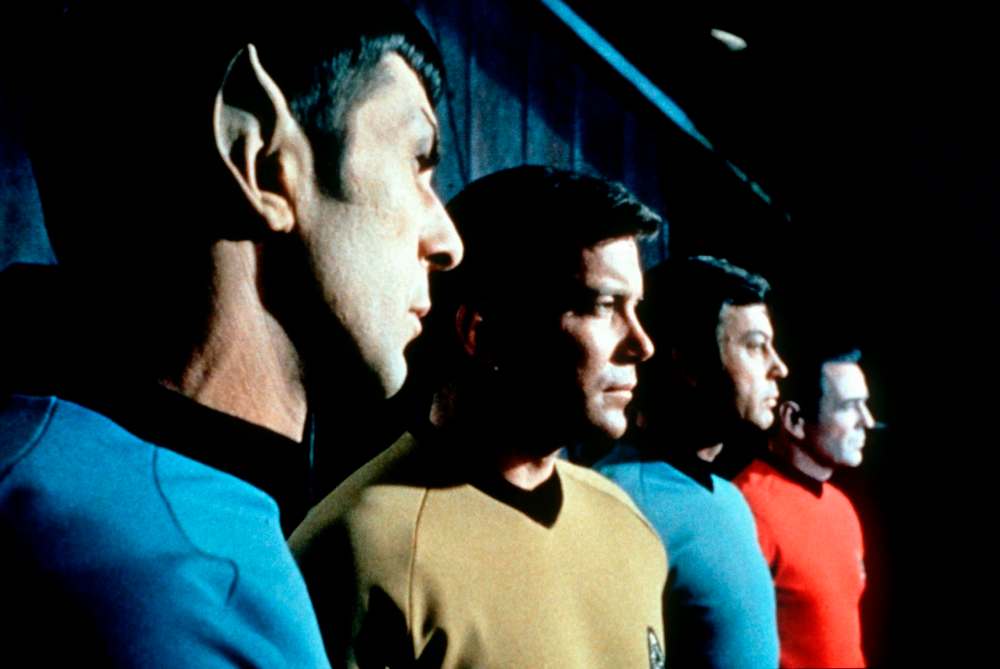Looking back at where man has gone before
Advertisement
Read this article for free:
or
Already have an account? Log in here »
To continue reading, please subscribe:
Monthly Digital Subscription
$0 for the first 4 weeks*
- Enjoy unlimited reading on winnipegfreepress.com
- Read the E-Edition, our digital replica newspaper
- Access News Break, our award-winning app
- Play interactive puzzles
*No charge for 4 weeks then price increases to the regular rate of $19.00 plus GST every four weeks. Offer available to new and qualified returning subscribers only. Cancel any time.
Monthly Digital Subscription
$4.75/week*
- Enjoy unlimited reading on winnipegfreepress.com
- Read the E-Edition, our digital replica newspaper
- Access News Break, our award-winning app
- Play interactive puzzles
*Billed as $19 plus GST every four weeks. Cancel any time.
To continue reading, please subscribe:
Add Free Press access to your Brandon Sun subscription for only an additional
$1 for the first 4 weeks*
*Your next subscription payment will increase by $1.00 and you will be charged $16.99 plus GST for four weeks. After four weeks, your payment will increase to $23.99 plus GST every four weeks.
Read unlimited articles for free today:
or
Already have an account? Log in here »
Hey there, time traveller!
This article was published 08/09/2016 (3347 days ago), so information in it may no longer be current.
The original Star Trek turned 50 last week.
For that kind of milestone celebration, you usually forgo the full slate of candles on the cake and make do with one each for past, present and future. Somehow that seems perfect for Star Trek, since this iconic TV series is such a time-warping mix of all three.
THE PAST
As a kid I watched Star Trek in syndicated reruns, which aired five days a week, right after school, for years. (That was about as bingey as you could get in the 1970s.) Since only 79 episodes of the original series were made, they ended up repeating regularly. (Yay, Mirror, Mirror! Oh no, Spock’s Brain!) Without even trying to be a Trekkie, I saw every episode again and again.

The 1966-69 series has recently started streaming on Netflix and CraveTV. Returning to the USS Enterprise after a decades-long gap, I was struck by how much of the show was imprinted on my consciousness.
Many of the storylines came right back, but mostly it was the little things: the shoosh-shoosh of the doors, the sparkly, spray-painted foam rocks, the jagged, angular music that plays in the scary scenes.
It’s reassuringly easy to pick up where I left off in grade school.
There’s a friendly familiarity to Leonard (Bones) McCoy’s outraged sputtering, Mr. Spock’s quizzical raised eyebrow, Capt. James T. Kirk’s habit of taking off his shirt on the flimsiest of pretenses. (“There goes the shirt again,” Gwen DeMarco says in 1999’s Galaxy Quest, a deeply affectionate Star Trek spoof.)
THE FUTURE
In some ways classic Star Trek is hopelessly, hilariously retro. Certain things that must have seemed trippy and forward-looking in 1966 now look quaint. Consider the technology — so many blinking lights! — and the ridiculous women’s outfits, which are like the “sexy Halloween costume” version of a Starfleet uniform. (Wearing nylons in the 23rd century — now that’s dystopian.)
But the show also built up a compelling vision of the future, combining 1960s liberal idealism and space-age optimism with a belief in the basic goodness of humankind. Think of all those episodes in which earthling qualities dismissed by androids, alien overlords and Mr. Spock as weaknesses — our irrational loyalty, our stubborn hopefulness — are revealed as strengths.
And, sure, the lead characters might have been white guys — and, um, a Vulcan — but 50 years ago it meant something to see multiracial and multinational crew members such as Sulu, Uhura and even Chekov. (In the freeze of the Cold War, making a favourite character a proud Russian was actually a pretty big thing.) It suggested bigotry and war would one day be barbaric historical relics.
THE PRESENT
In the imperfect universe of 2016, Star Trek can come off as cornball escapism.
All that peppy positive thinking looks a little naïve when stacked against the dismal teen-slaughtering dystopia of The Hunger Games franchise or the brilliantly dark Black Mirror, a British sci-fi series whose view of near-future technology is so terrifying you want to throw away all digital devices and crawl into a cave.
But maybe we need a little Trekkie boost at a time when the pop-culture diversity confidently launched in 1966 remains frustratingly stalled out; when our public discourse is so polarized, ugly and divisive; when our politics are increasingly driven by hate-mongering megalomaniacs who wouldn’t look out of place as disembodied heads floating on the Enterprise’s viewscreen.
The original Star Trek celebrated the best of humankind, offering 50-minute glimpses of a possible future where we’ve transcended our worst instincts.
That future still seems a long way off, but maybe the show’s humane and hopeful heart can give us some strength to face our present fights.
alison.gillmor@freepress.mb.ca

Studying at the University of Winnipeg and later Toronto’s York University, Alison Gillmor planned to become an art historian. She ended up catching the journalism bug when she started as visual arts reviewer at the Winnipeg Free Press in 1992.
Our newsroom depends on a growing audience of readers to power our journalism. If you are not a paid reader, please consider becoming a subscriber.
Our newsroom depends on its audience of readers to power our journalism. Thank you for your support.
History
Updated on Thursday, September 8, 2016 4:18 PM CDT: Cutline fixed.



